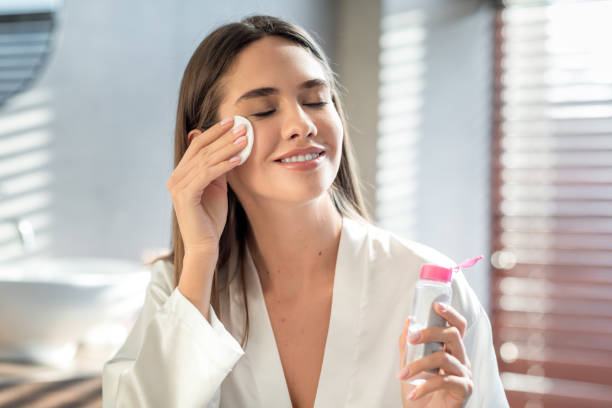The Ultimate Guide to Double Cleansing: How Often Should You Do It?

The Ultimate Guide to Double Cleansing: How Often Should You Do It?
Achieving clear, radiant, and healthy skin is a universal goal, and it all starts with a proper skincare routine. Another step in this routine is double cleansing, a technique that has gained popularity in recent years. But how often should you double cleanse? This comprehensive guide delves into double cleansing, its benefits, the best practices, and expert advice on how frequently you should incorporate it into your skincare regimen. Whether you're a skincare enthusiast or just starting your skincare journey, this article will provide valuable insights to help you make informed decisions for your skin's health.
Understanding Double Cleansing
Before we dive into the frequency of double cleansing, let's clarify what it entails. Double cleansing is a two-step cleansing using an oil-based cleanser followed by a water-based cleanser. The primary goal of this technique is to thoroughly remove all traces of makeup, sunscreen, pollutants, and excess sebum from your skin. Here's a breakdown of the two steps:
- Oil-Based Cleanser: The first step involves massaging oil-based onto dry skin. Oil-based cleansers are excellent at breaking down and dissolving makeup, sunscreen, and the natural oils your skin produces. They can be in the form of cleansing oils, balms, or micellar water.
- Water-Based Cleanser: After rinsing off the oil-based cleanser, use a water-based cleanser. This step removes any remaining impurities, including sweat and dirt, and helps to balance the skin's pH. Water-based cleansers are typically in the form of foaming or gel cleansers.
The Benefits of Double Cleansing
Now that you understand the basics of double cleansing, let's explore why it has become such a popular and effective skincare practice:
Deep Cleansing
Double cleansing ensures that every layer of dirt, makeup, and sunscreen is thoroughly removed from your skin, preventing clogged pores and breakouts.
Improved Absorption
By removing all barriers, such as makeup and sunscreen, your subsequent skincare products (serums, moisturizers, etc.) can penetrate deeper into your skin, making them more effective.
Prevents Breakouts
Clean skin is less prone to acne breakouts, making double cleansing an excellent choice for those with acne-prone skin.
Brighter Complexion
Regular double cleansing can help improve skin texture for a brighter, more radiant complexion.
How Often Should You Double Cleanse?
Now comes the crucial question: How often should you double cleanse? The frequency of double cleansing largely depends on your skin type, lifestyle, and the products you use. Here are some guidelines:
Daily Makeup and Sunscreen Wearers
If you wear makeup or sunscreen daily, it's advisable to double cleanse every evening before going to bed. This ensures that all the products are removed from your skin.
Heavy Makeup or Waterproof Products
If you use heavy makeup or waterproof cosmetics, double cleansing becomes more important. Failing to remove these products thoroughly can lead to clogged pores and breakouts. Double cleanse on days when you use such products.
Oily Skin
Individuals with oily skin tend to produce more sebum and are more prone to clogged pores. Double cleansing can be a daily routine for those with oily skin to keep excess oil and impurities in check.
Dry or Sensitive Skin
If you have dry or sensitive skin, double cleansing every day may be too harsh. Consider double cleansing 2-3 times a week or when you wear makeup or sunscreen. Use gentle, hydrating cleansers to avoid over-drying your skin.
Active Skincare Ingredients
If you use active ingredients like retinol or acids, double cleansing can help remove these products effectively, reducing the risk of irritation. Follow the instructions of your skincare professional regarding the frequency of double cleansing.
Environmental Factors
If you live in a highly polluted area or have been exposed to environmental pollutants, double cleansing can help remove these harmful particles from your skin. Consider double cleansing on such days.
Listen to Your Skin
Ultimately, the best guide for how often to double cleanse is your skin. Pay attention to how it feels. If it feels congested and dirty, or you notice breakouts, it may be a sign that you need to double-cleanse more frequently.
Best Practices for Double Cleansing
To make the most out of double cleansing, follow these best practices:
- Choose the Right Products: Select oil-based and water-based cleansers that are suitable for your skin type. Avoid products with harsh ingredients that can strip your skin of its natural oils.
- Use Lukewarm Water: Use lukewarm water to rinse your face. Hot water can be drying, while cold water may not effectively remove oil-based cleansers.
- Gentle Massage: When applying the oil-based cleanser, use gentle, circular motions to massage your face. Be thorough but avoid being too aggressive, especially if you have sensitive skin.
- Avoid Over-Exfoliating: Double cleansing is effective, but it's not a substitute for exfoliation. Don't overdo it, as excessive cleansing can lead to irritation.
- Pat Dry: After double cleansing, pat your face dry with a clean towel instead of rubbing. Rubbing can cause unnecessary friction and potential irritation.
- Follow with Moisturizer: Always follow up double cleansing with a good moisturizer to lock in hydration and maintain your skin's barrier.
Conclusion
Double cleansing has emerged as a powerful tool due to its benefits. The frequency of double cleansing should be tailored to your skin type and needs. Whether you choose to double cleanse daily or a few times a week, the key is to listen to your skin and adapt your routine accordingly. By following the best practices outlined in this guide, you can achieve a clear, radiant complexion that you'll be proud to flaunt.
